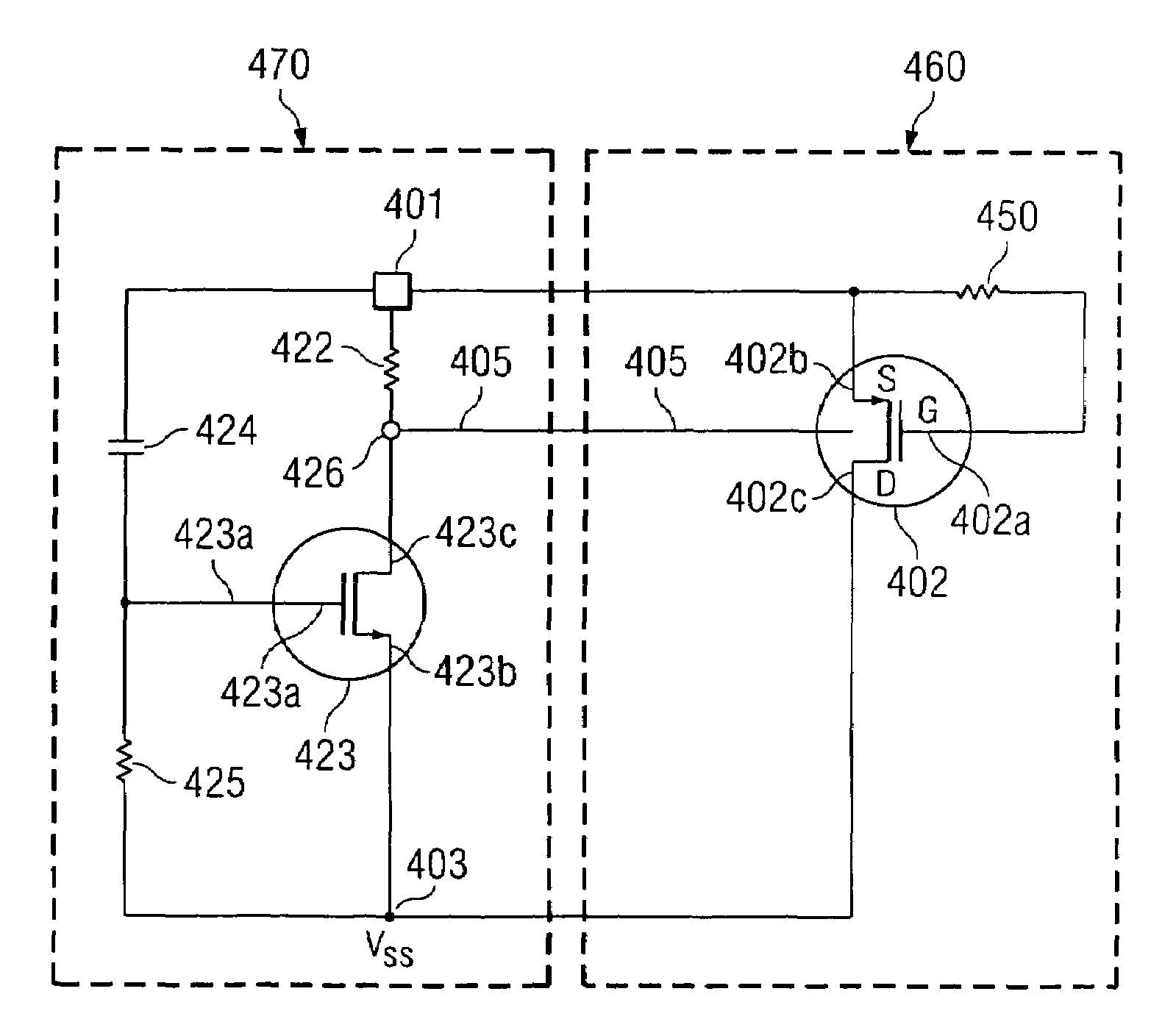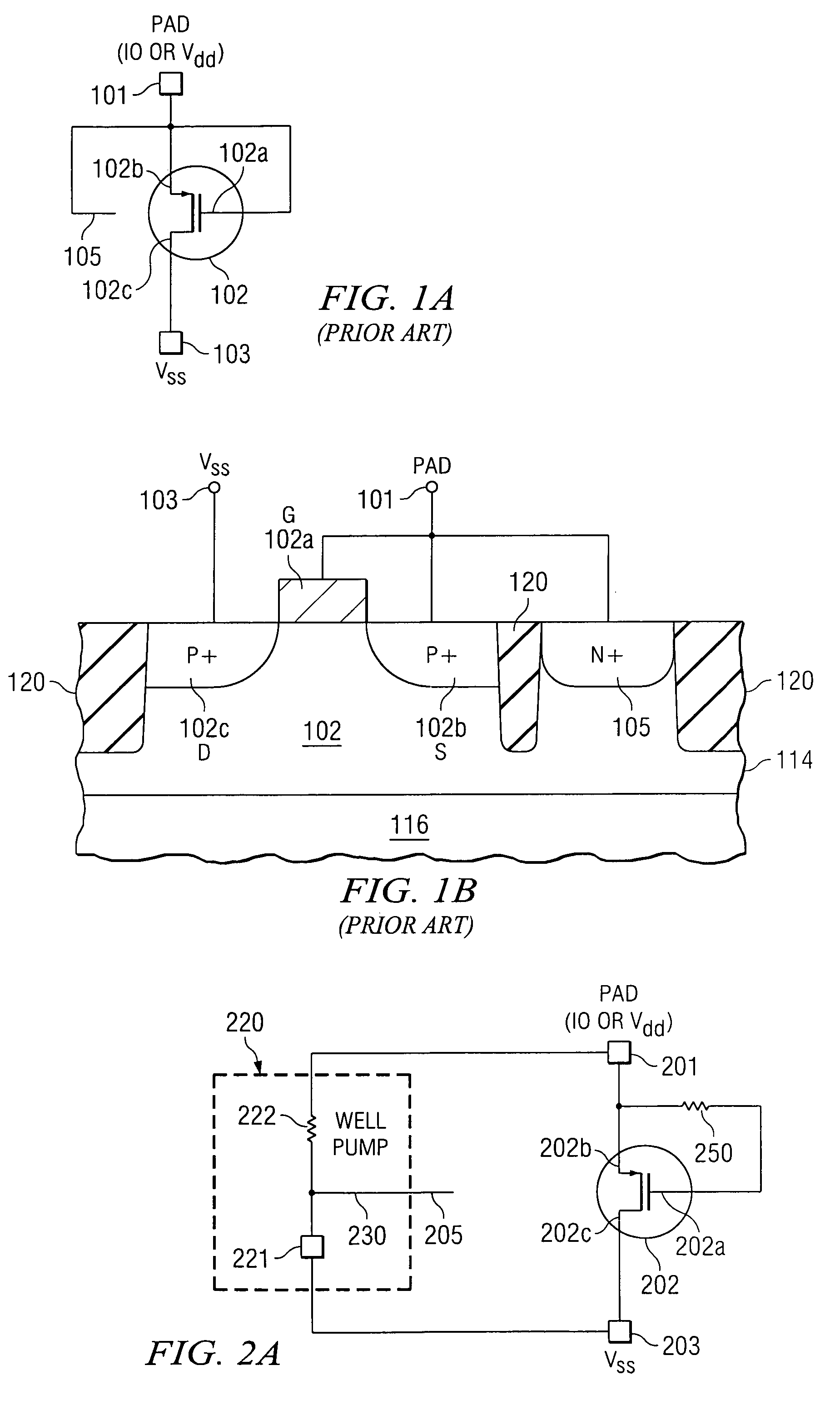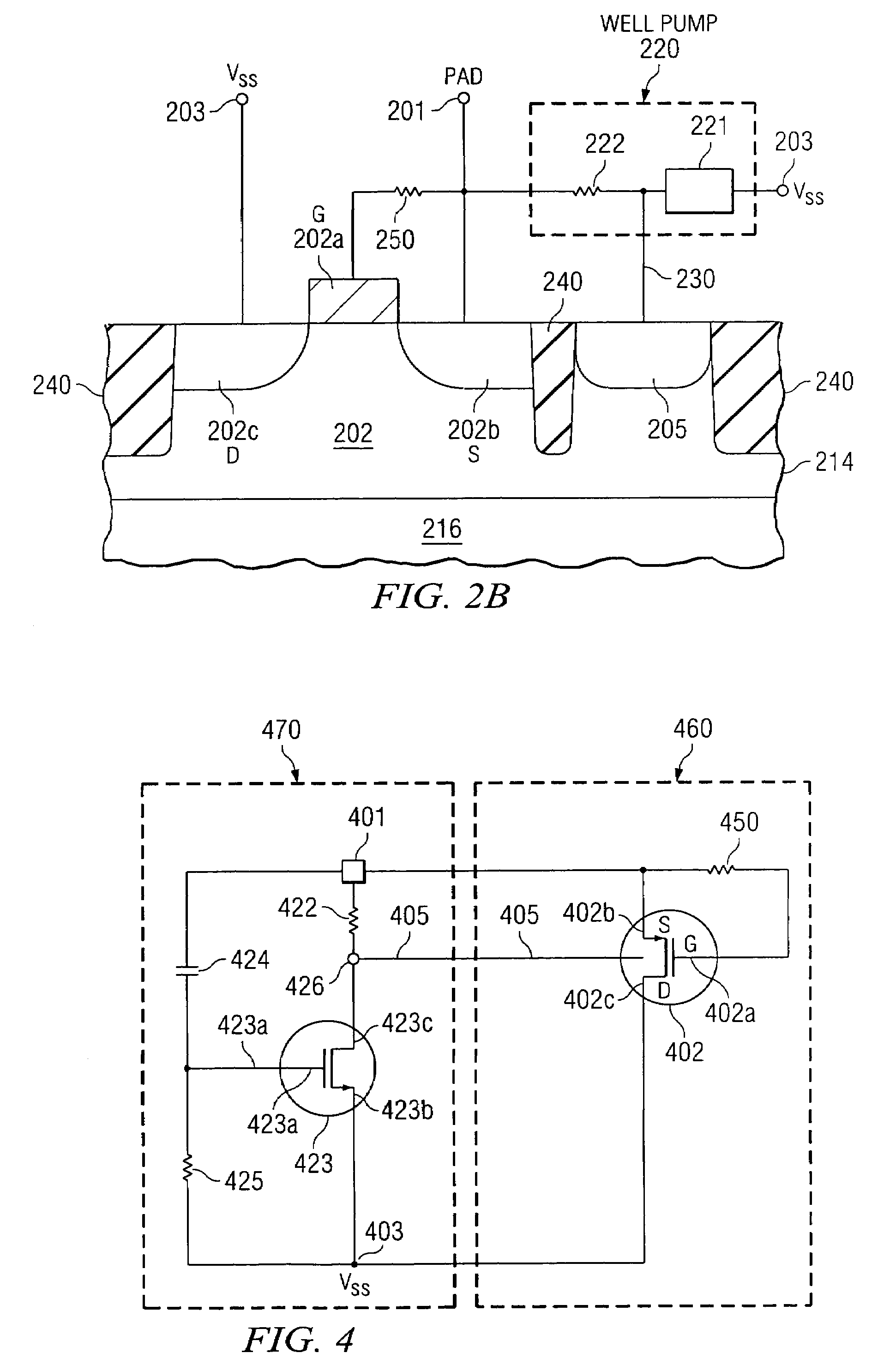Body-biased pMOS protection against electrostatic discharge
a pmos and body-biased technology, applied in the direction of semiconductor devices, semiconductor/solid-state device details, electrical apparatus, etc., can solve the problems of thermal runaway in the device, severe damage to the integrated circuit,
- Summary
- Abstract
- Description
- Claims
- Application Information
AI Technical Summary
Benefits of technology
Problems solved by technology
Method used
Image
Examples
Embodiment Construction
[0029]The present invention is related to U.S. Pat. No. 5,940,258, issued on Aug. 17, 1999 (Duvvury, “Semiconductor ESD Protection Circuit”).
[0030]FIGS. 2A and 2B are a schematic circuit diagram and cross section of an ESD protection circuit, which is included in an integrated circuit (IC) in addition to other devices in the IC. These ICs can typically be found in processors, digital and analog devices, and other high performance devices. ESD protection is an integral part of an IC and is typically used at each input / output pin in order to discharge any electrical transients received at the IC before they enter the IC and cause damage to electrostatic sensitive components.
[0031]In FIGS. 2A and 2B, 201 represents a pad (input / output, power, Vdd). It is fabricated on the semiconductor substrate 202, usually silicon of a first conductivity type. In the preferred embodiment, the first conductivity type is p-type; it should be stressed, however, that all following considerations also hol...
PUM
 Login to View More
Login to View More Abstract
Description
Claims
Application Information
 Login to View More
Login to View More - R&D
- Intellectual Property
- Life Sciences
- Materials
- Tech Scout
- Unparalleled Data Quality
- Higher Quality Content
- 60% Fewer Hallucinations
Browse by: Latest US Patents, China's latest patents, Technical Efficacy Thesaurus, Application Domain, Technology Topic, Popular Technical Reports.
© 2025 PatSnap. All rights reserved.Legal|Privacy policy|Modern Slavery Act Transparency Statement|Sitemap|About US| Contact US: help@patsnap.com



